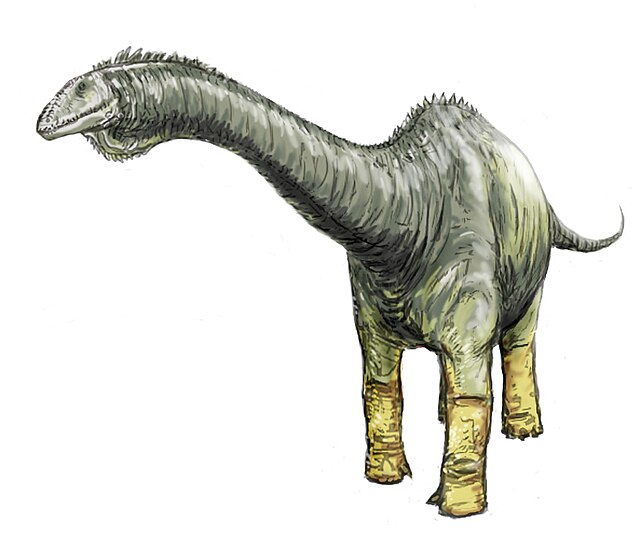Haplocanthosaurus is a genus of intermediate sauropod dinosaur. Two species, H. delfsi and H. priscus, are known from incomplete fossil skeletons. It lived during the late Jurassic period, 155 to 152 million years ago. The type species is H. priscus, and the referred species H. delfsi was discovered by a young college student named Edwin Delfs in Colorado, United States. Haplocanthosaurus specimens have been found in the very lowest layer of the Morrison Formation, along with Hesperosaurus mjosi, Brontosaurus yahnahpin, and Allosaurus jimmadseni.
Haplocanthosaurus
Life restoration
Specimen FHPR 1106
Incorrectly mounted[clarification needed] H. delfsi skeleton, Cleveland Museum of Natural History
The Morrison Formation is a distinctive sequence of Upper Jurassic sedimentary rock found in the western United States which has been the most fertile source of dinosaur fossils in North America. It is composed of mudstone, sandstone, siltstone, and limestone and is light gray, greenish gray, or red. Most of the fossils occur in the green siltstone beds and lower sandstones, relics of the rivers and floodplains of the Jurassic period.
The distinctive banding of the Morrison Formation, a group of rock layers that occur throughout Dinosaur National Monument and the source of fossils like those found at the Dinosaur Quarry
Stratotypes for members of the Morrison Formation
Brushy Basin Member showing the purple and red colors of paleosols (ancient soils). East side of the San Rafael Swell, Emery County, Utah.
Gypsiferous facies of the Ralston Creek Member exposed in a road cut, Fremont County, Colorado.




![Incorrectly mounted[clarification needed] H. delfsi skeleton, Cleveland Museum of Natural History](https://upload.wikimedia.org/wikipedia/commons/thumb/a/aa/Cleveland_Museum_Haplocanthosaurus.jpg/640px-Cleveland_Museum_Haplocanthosaurus.jpg)



